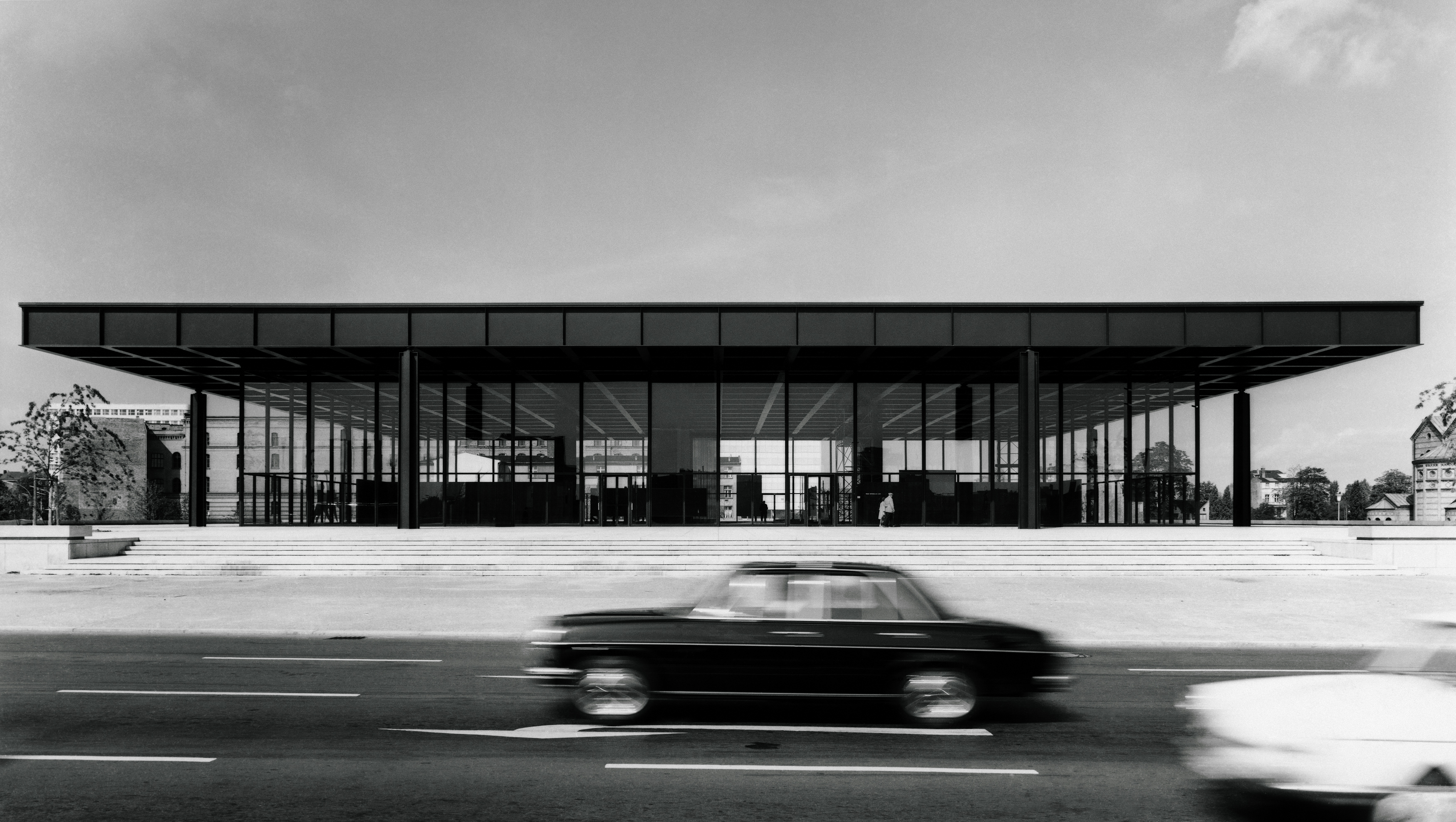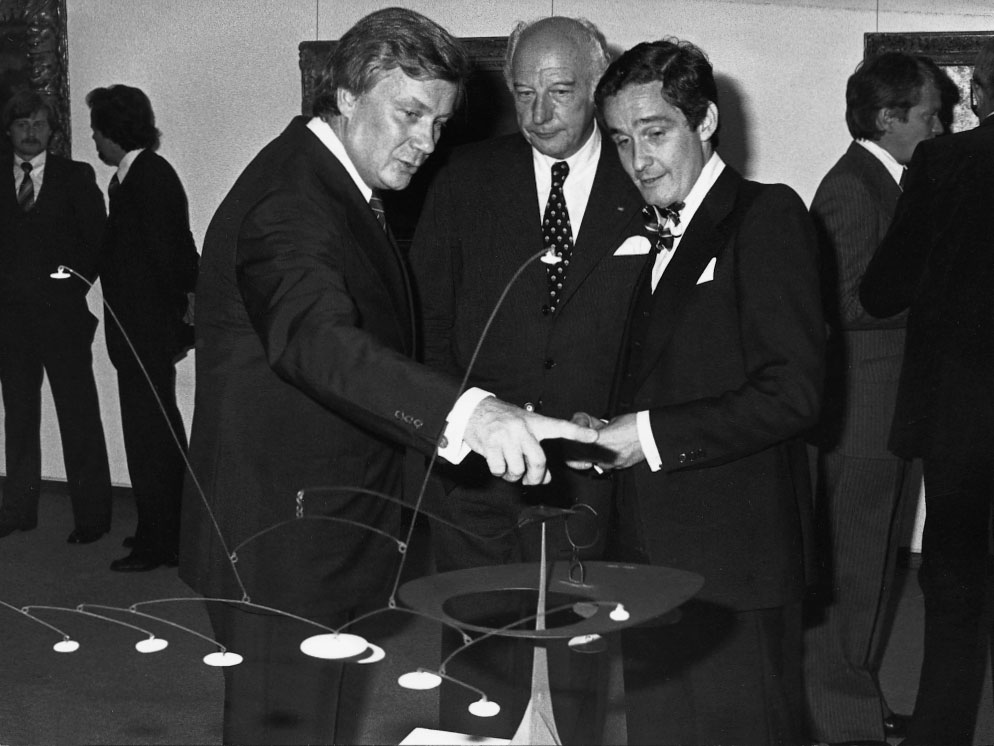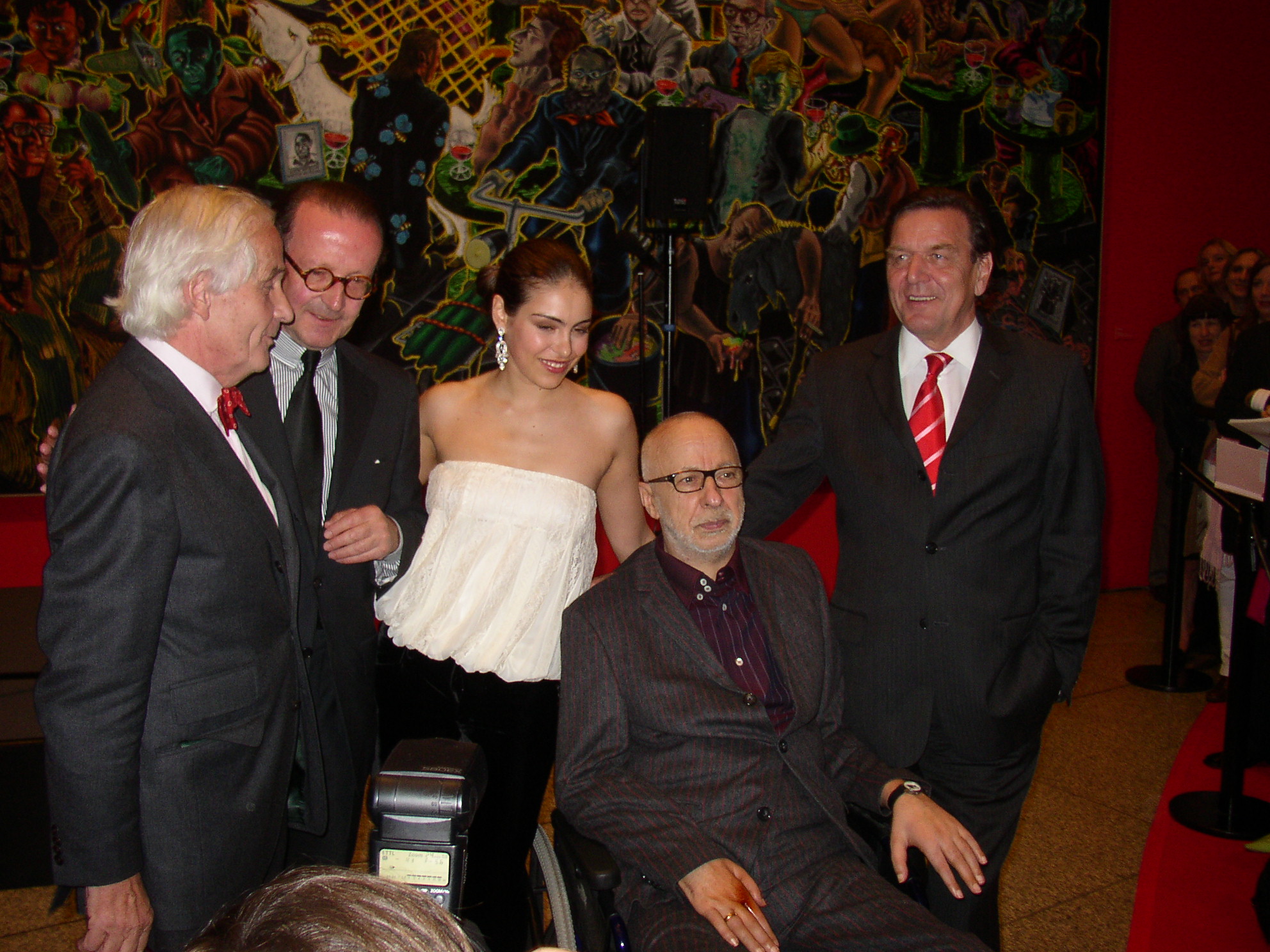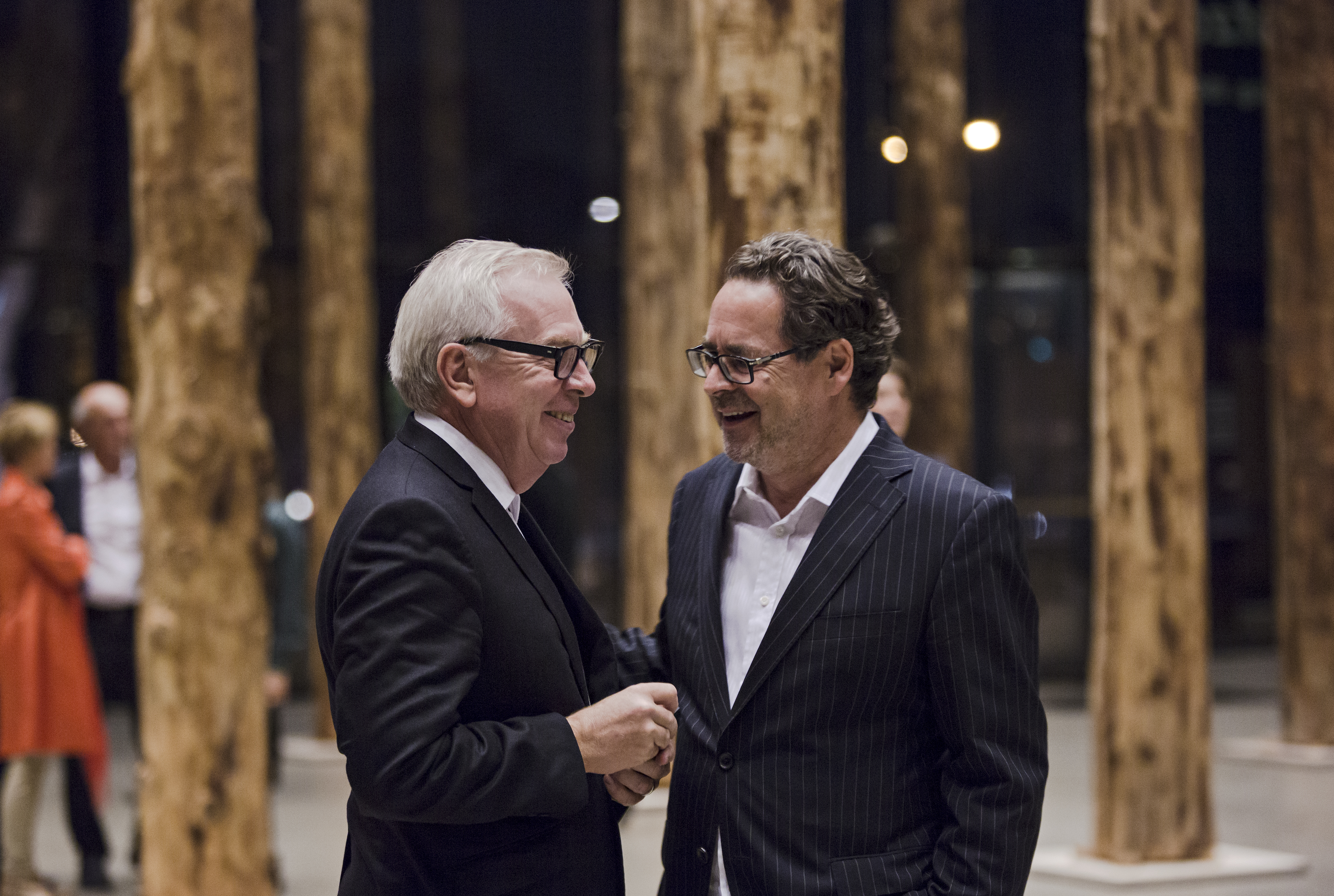
Neue Nationalgalerie, view from Potsdamer Straße, 1968 | photo: Reinhard Friedrich/Archiv Neue Nationalgalerie, Nationalgalerie, Staatliche Museen zu Berlin
Berlin, once a partitioned city whose prolonged post-war era extended until 1989, was for many years a place epitomised by loss. No longer the capital, no longer the industrial metropolis it once was, with no immediate neighbours, completely disturbed in its Prussian traditions, and with no middle-class intellectual stratum – a fact due in part to the loss of its Jewish citizens – the divided Berlin was a double site of loss.
On both sides of the city, academic institutions and the arts were uniquely able to counteract this sense of loss. In the West, as in the East, it was the orchestras, the theatres and museums, the libraries and universities that bestowed upon this double city both a new old appeal, as it were, and a sense of new life.
Opened in 1968, the year of the student revolution, Ludwig Mies van der Rohe’s temple of the Neue Nationalgalerie was the first clear torch signalling the city’s recaptured international standing – at least in one half of the city – which was achieved on the basis of modern art.

Dieter Honisch together with Walter Scheel and Peter Raue in front of Alexander Calder's ``Dancing Stars``, 1978
Werner Haftmann, the first director of a high intellectual calibre, remained an aristocratic loner in Berlin. By comparison, Dieter Honisch, the second master of the temple of Modernism, was at once more radical and more pragmatic. Acting in a manner as surprising as it was unwavering, he was a masterly strategist, particularly where the overwhelming of the ranks of the “well-meaning” through art is concerned.
Working in tandem, the Honisch-Raue duo was finally able to retransform the business of art into a public affair – through the re-establishment of the Verein der Freunde der Nationalgalerie by Honisch more than 30 years ago, over which Peter Raue has presided until 2008. The extent to which their hindsight, if you will, demonstrated extraordinary foresight became apparent no later than at the re-opening of the Alte Nationalgalerie on the Museumsinsel in 2001. As a result of the successful reacquisition of the historical museum temple situated in the heart of Berlin, the purpose of the Verein – to support the Nationalgalerie – was once again extended beyond the task of revitalising West Berlin. Indeed, it began to work in the service of the “cultural nation” at large.

Jörg Immendorff at the opening of his retrospective with Gerhard Schröder, former German chancellor, and Peter-Klaus Schuster
Under the aegis of Peter-Klaus Schuster, the third director of the Nationalgalerie and simultaneously Director-General of the Staatliche Museen zu Berlin, the Nationalgalerie attracts numerous visitors from Germany and abroad with a long list of major exhibitions on Goya, Gaugin, Picasso and Immendorff, from “Wolkenbilder. Die Entdeckung des Himmels” (Pictures of Clouds: The Discovery of Heaven) to “Melancholie. Genie und Wahnsinn in der Kunst” (Melancholy: Genius and Madness in Art). Many of these projects have been made possible solely through the financial and organisational support of the friends of the museum. The pioneering successes of “MoMA in Berlin” and “Die Schönsten Franzosen kommen aus New York” (The Most Beautiful French Come from New York) not only helped interest a total of 2 million visitors – many of whom came to the museum for the first time – in the origins and pinnacles of modernism, they also set new standards in organising exhibitions for contemporary audiences.

David Chipperfield and Udo Kittelmann during the opening of ``David Chipperfield – Sticks and Stones`` at Neue Nationalgalerie | photo: David von Becker
In the meantime, the Freunde der Nationalgalerie has made it its mission to stand behind the vast institution of the Nationalgalerie, which now encompasses six houses including the Alte and Neue Nationalgalerie, the Hamburger Bahnhof, Friedrichswerdersche Kirche, Sammlung Scharf-Gerstenberg and Museum Berggruen in the new old capital of the Federal Republic of Germany. It is a mission of enormous significance – in international terms as well.

Exhibition ``Thomas Demand. Nationalgalerie`` at Neue Nationalgalerie | photo: David von Becker / © VG Bild-Kunst, Bonn 2019
